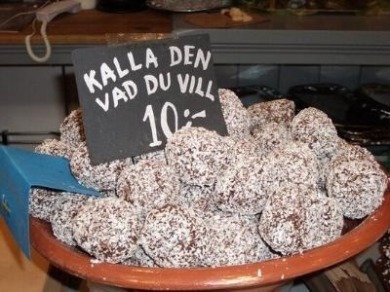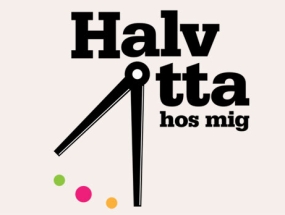
What you choose to call it – racist or politically correct?
The interesting thing about language and culture is that they are constantly in flux. As time goes on, languages develop and as more people travel or migrate, cultural behaviours change. This can be a scary thing for some people who don’t want to see change happening and who cannot embrace the new aspects of their culture. They fiercely hold on to the past, their old cultural identites and behaviours and actively work against the positive influences that a cultural mix brings.
One such example of this is the chocolate ball, a kind of cake that is very popular in Sweden. Previously, in less enlightened times, these chocolate balls were called ‘negerbollar’. This translates as ‘nigger balls’ or ‘negro balls’. Understanding the offensive nature of the name, this chocolate delicacy was officially renamed some years ago. But a certain section of the population, who I am guessing are not black, hold on to their right to call them nigger balls. Yesterday, was so-called ‘negerbollen day’ on Facebook and 21 000 people had signed up their support to say ‘negerboll’. In a counter move, an organization refusing to use this title was set up claiming tomorrow as ‘Chocolate Ball Day’.
In a country with a self-image of tolerance, the chocolate ball has become a symbol of political correctness versus racism.
Sweden is a country with the right to self expression and freedom of speech. But with that right and freedom also comes responsibility. Just because we can say whatever we want doesn’t mean we should. If with our words we can cause harm, or personal offence, I think that we should choose other words. In cultural theory, there is a concept of the in-group and the out-group. One way to look at this is that the in-group is the group in the majority, they set the rules, the create the standards and decide the norms. The out-group is in the minority, and they are very aware of how injust some of the behaviours of the in-group are. The in-Group is usually blissfully ignorant of these things because they don’t have to think about it. But it is the in-Group that has the power to make the change. Chocolate balls are just one example of that. It’s not about being politically correct, it’s about realising that with the language we use, we create gaps in our society. We might not care if we say ‘nigger balls’ but as long as somebody else is offended then we should change our words. The majority of Sweden has done that, but not all.
We are all in in-Groups sometimes and all in Out-Groups sometimes. Maybe it’s our religion that puts us in the out-Group or our sexuality, skin colour, origin, profession, education, place we live, unemployed status, interests and hobbies, political beliefs, choice of clothes. If you reflect for a moment over a social out-group you identify with and then pick a derogatory word for that group. Then put that word in front of the word ‘cake’. How does that feel? Probably not ok.
So let’s think broader than our own perspectives. We have a history of language and culture to be proud over, but that doesn’t mean we can’t change it. A small word can make a huge difference to improving integration and harmony in a society.
So is ‘negerboll’ racist? It depends. If you are aware that it is loaded with multiple meaning, that you might seriously offend others and that you’re using it politically – then yes. It is extremely racist. If you live isolated in a part of the country where you do not know that ‘neger’ is an offensive word to others but you think that it just means chocolate – then no, it’s not racist. But you do need to get out more.




